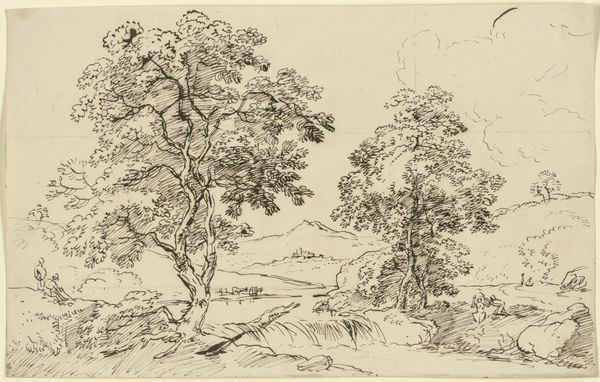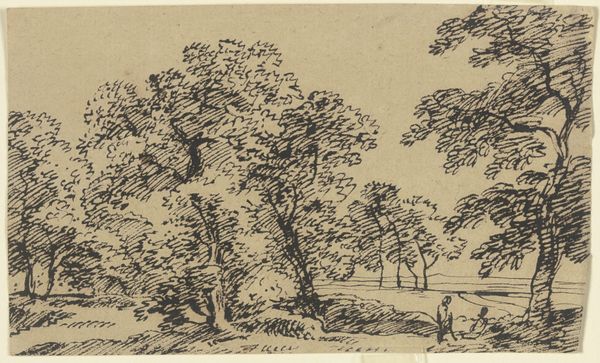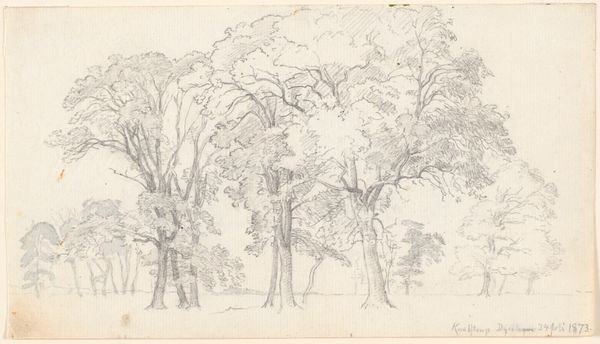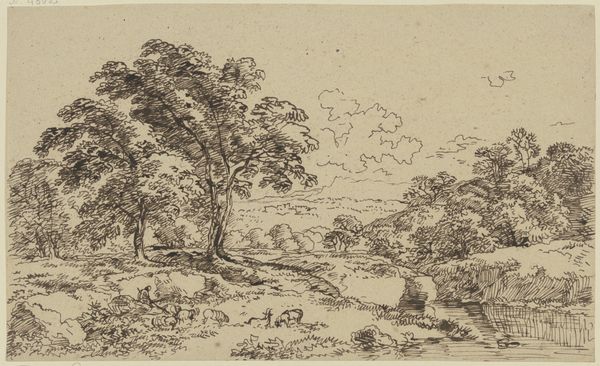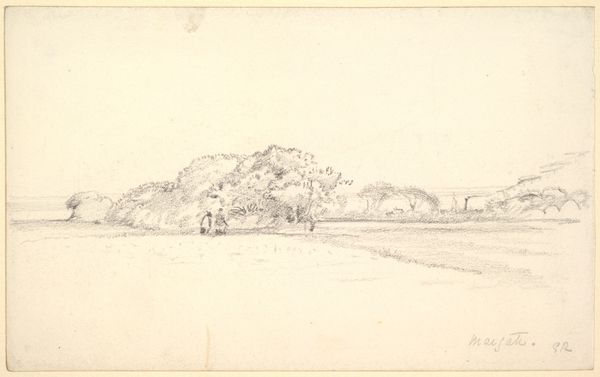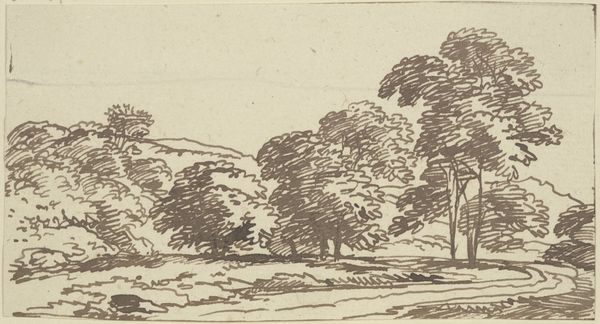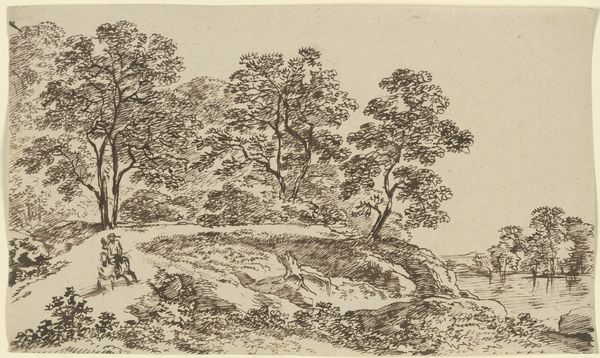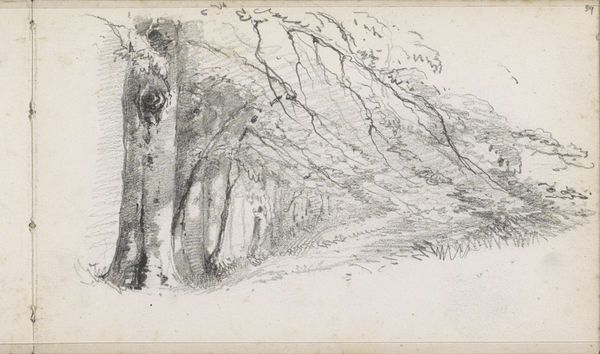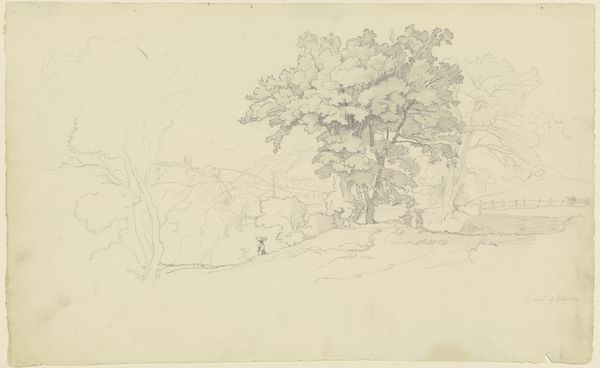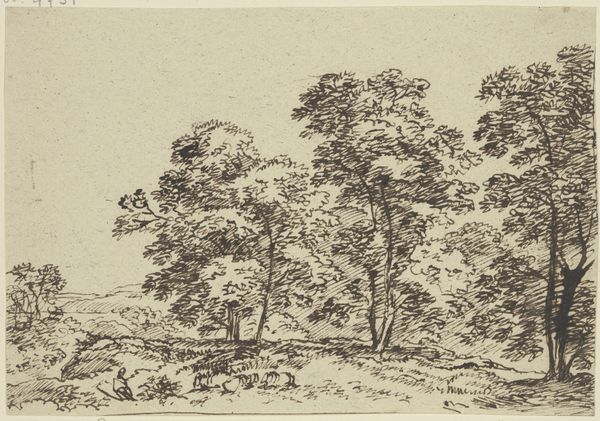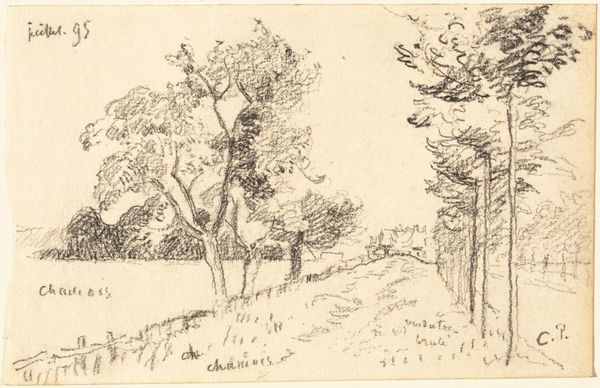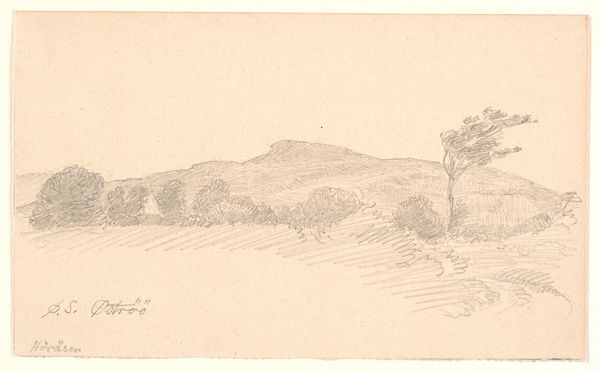
drawing, ink, pencil
#
drawing
#
landscape
#
ink
#
pencil
#
academic-art
#
realism
Curator: I'm immediately drawn to the contrasting textures—the density of the foliage against the blankness of the paper, it almost vibrates with a stark simplicity. Editor: Indeed. We are looking at a sheet of studies by P.C. Skovgaard, dating to 1847. It is called "Studieblad med to landskaber med store træer", a drawing rendered in both ink and pencil, currently housed in the collection of the SMK, the Statens Museum for Kunst. The artist has captured two separate landscape views on the same page. Curator: The top landscape strikes me as having a formal, almost staged quality. Note how Skovgaard employs repetitive diagonal hatching, primarily with ink. It serves not just to describe form but also to create patterns and layers of shadows and tone. Editor: I find myself thinking about Skovgaard's working methods here, a view into artistic labor. This study was, no doubt, preparatory. He was deeply immersed in understanding how nature could be distilled into representational form for later use in more finished paintings for the consumption of his patrons. Curator: Do you notice how the strategic use of blank space focuses the viewer’s gaze? The interplay between negative space and mark-making generates visual tension and a strong graphic effect. There’s almost an abstract quality. Editor: But consider the socio-economic implications. Paper production and access to materials, along with leisure time dedicated to honing one's craft—all reflect privilege. The landscape, too, became a commodity to be bought and sold through paintings. Skovgaard occupied a specific position within that market, and his works met particular demands from an emerging middle class eager for imagery confirming national identity. Curator: I appreciate how this allows a deep consideration of the form and presentation that creates this strong sense of place through quite simple, immediate, means. Editor: And looking closely allows an insight into the artistic industry of 19th-century Denmark, how the representation of landscapes connected with economy and cultural identity.
Comments
No comments
Be the first to comment and join the conversation on the ultimate creative platform.
